We are undertaking an 8-10 day field project off Kaua’i starting on August 16th. This project is funded by the U.S. Navy as part of their Marine Species Monitoring Program and is timed to occur prior to a Submarine Command Course (SCC). Our primary goal is to deploy LIMPET satellite tags on one or more species of odontocete cetaceans prior to the SCC, to be able to examine their behavior before, during, and after the SCC. This approach has been very successful in the past as a way of examining how different species respond to Navy training activities including mid-frequency active sonar (MFAS). If you want to see some of the results of this work from prior field projects check out this report from 2021.
This will be the 14th year we’ve worked off Kaua’i (our first project there was in May and June 2003), and our 19th field effort off the island. In addition to our primary goal, these efforts contribute to our general understanding of what species of whales and dolphins use the area around Kaua’i and Ni’ihau, and photos obtained feed in to our photo-identification catalogs for many different species. Our last field effort off Kaua’i was in August 2021 – the project web page and a report we prepared on that effort provides a lot more information.
Our crew for this effort include Colin Cornforth, Jordan Lerma, Jackie Shaff, Mark Mohler, Jana Phipps, and Robin Baird, as well as a number of volunteers.
August 24th update
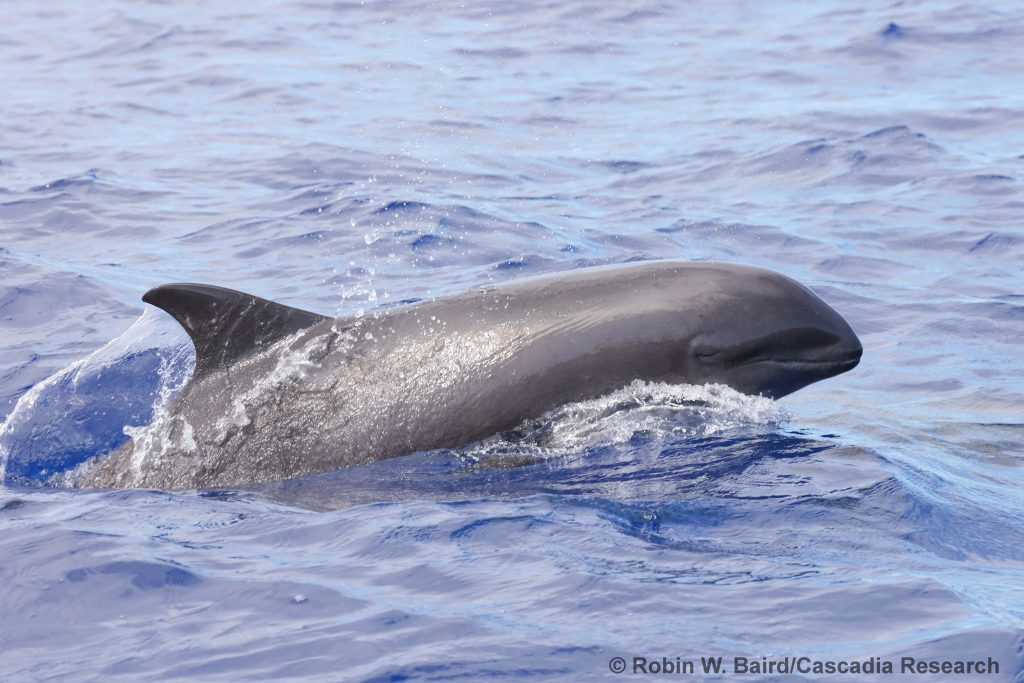
Today was our last day on the water, and it was quite a productive one. The acoustic folks directed us to a group of a couple of hundred melon-headed whales, and we were able to get two LIMPET satellite tags (the Wildlife Computers SPLASH10-F tags), as well as obtaining identification photos of over 100 individuals. There was a small group of rough-toothed dolphins mixed in, and we were able to deploy a SPLASH10 LIMPET tag on one individual.
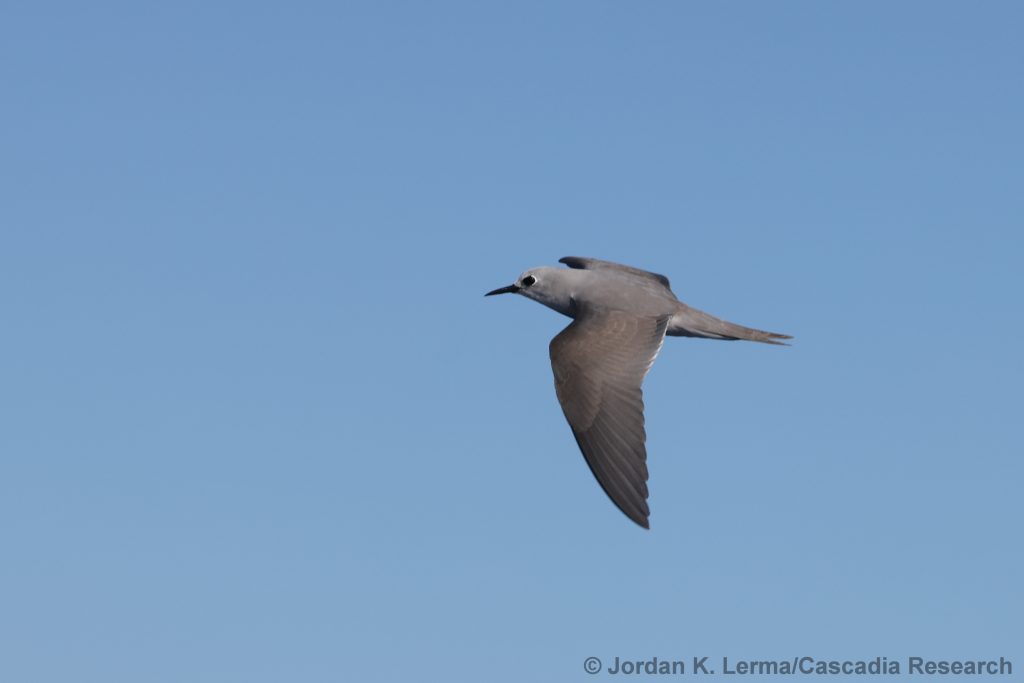
The highlight for the day though, at least for some of us, was actually a sighting of a Blue-gray Noddy, known in Hawaiian as a manuohina or hinaokū. This is both an extremely unusual species (only our third sighting ever in Hawai’i), and is the namesake of the daughter of one of our crew (Jordan Lerma)!
August 21st update
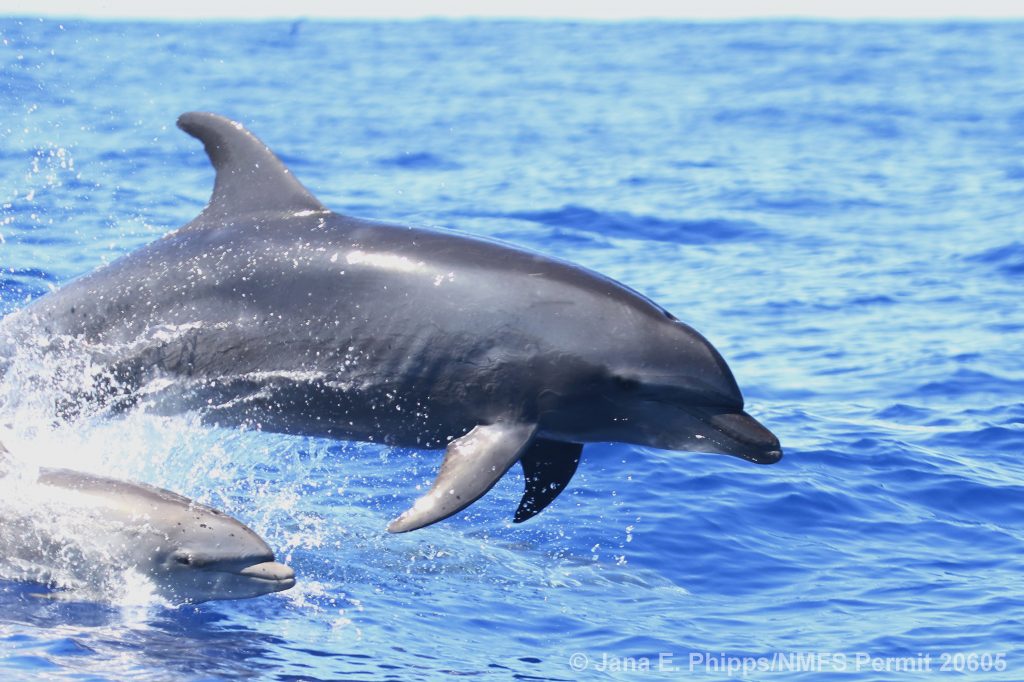
Winds the last few days have restricted our ability to work in deeper waters, but we have had productive encounters with the two commonly-encountered shallow-water species off the island, bottlenose and spinner dolphins. In addition to a lot of identification photos, we were able to deploy one depth-transmitting satellite tag on a bottlenose dolphin.
August 19th update
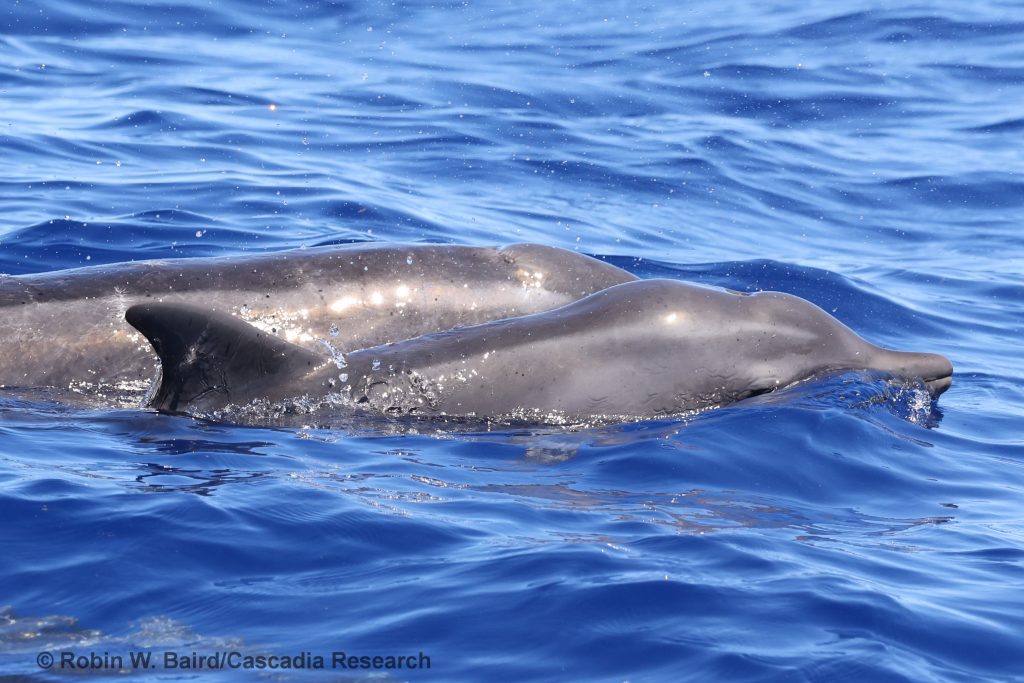
A call from Holo Holo Charters led us to a mixed group of rough-toothed dolphins and short-finned pilot whales today, and we were able to get good ID photos of most of the individuals present. The unusual shape of the head of the rough-toothed dolphin calf above may reflect that it is just extremely well-fed, rather than representing some sort of abnormal condition.
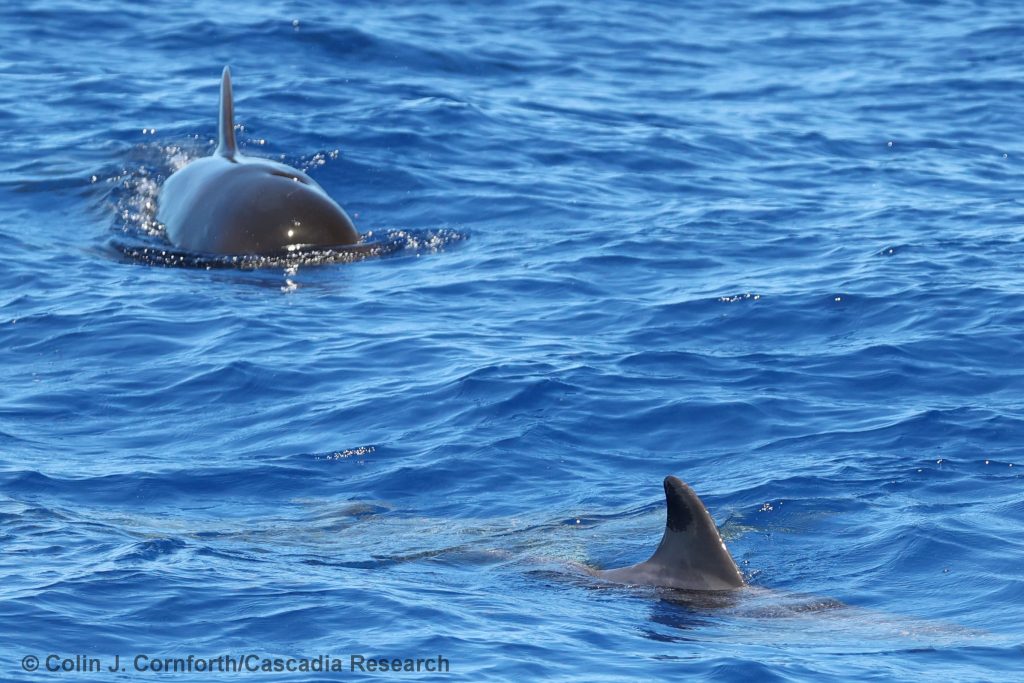
At least one of the pilot whales, a juvenile, appeared to be socially interacting with several rough-toothed dolphins, while the rest of the individuals of both species traveled slowly or socialized among themselves.
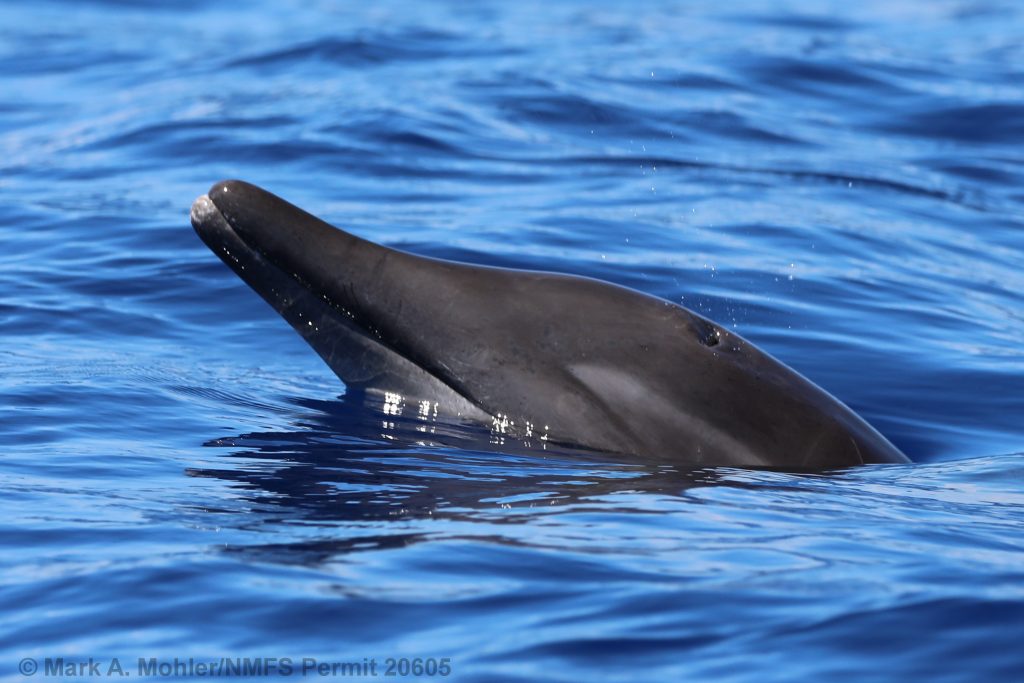
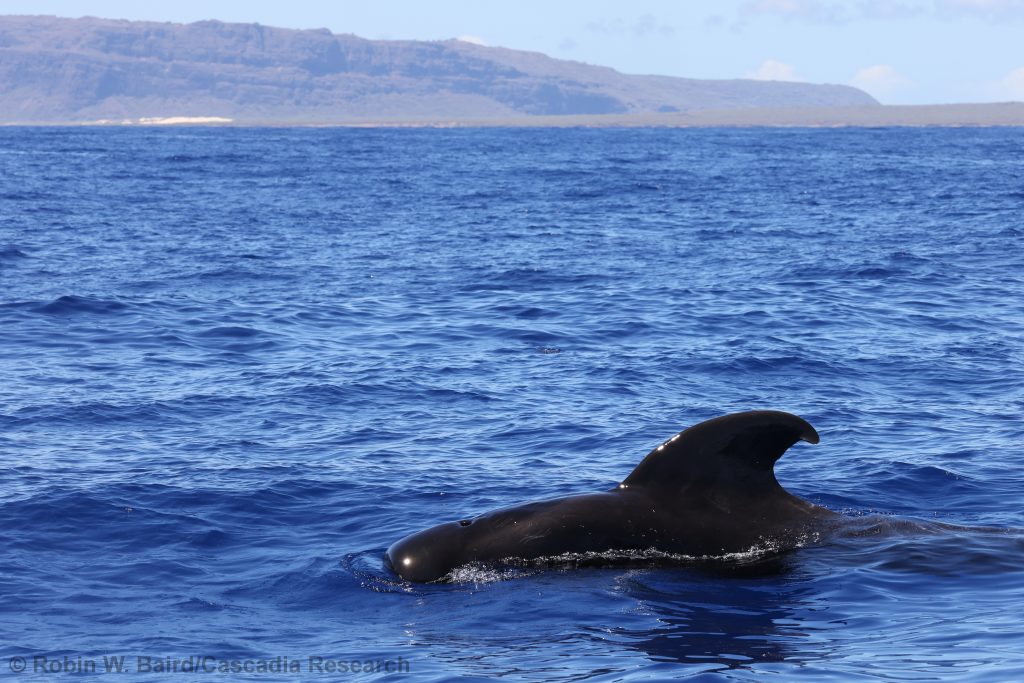
August 18th update
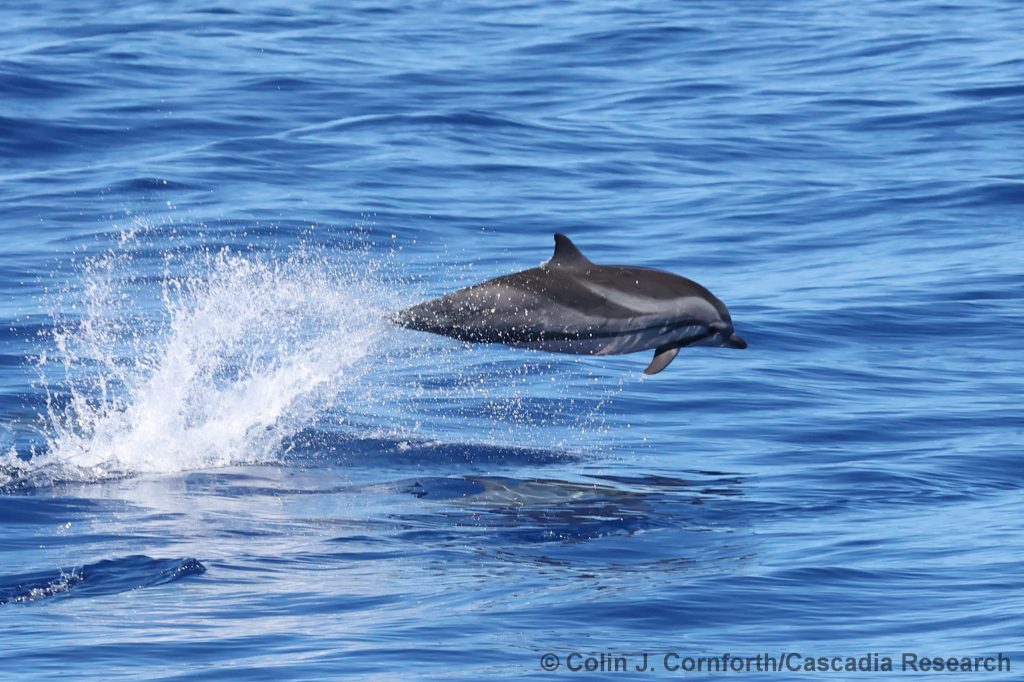
Our most unusual sighting for the day (and likely for the trip) was a group of striped dolphins! We were directed to this group by acoustic detections from the land-based acoustics team, and surprised to find out they were striped dolphins, a group of more than 60 individuals. Our only previous sighting of striped dolphins off Kaua’i was in June 2003! Striped dolphins in Hawaiian waters are part of a pelagic population, and thus rarely approach close to the islands. If you want more information on this species check out our striped dolphin web page.
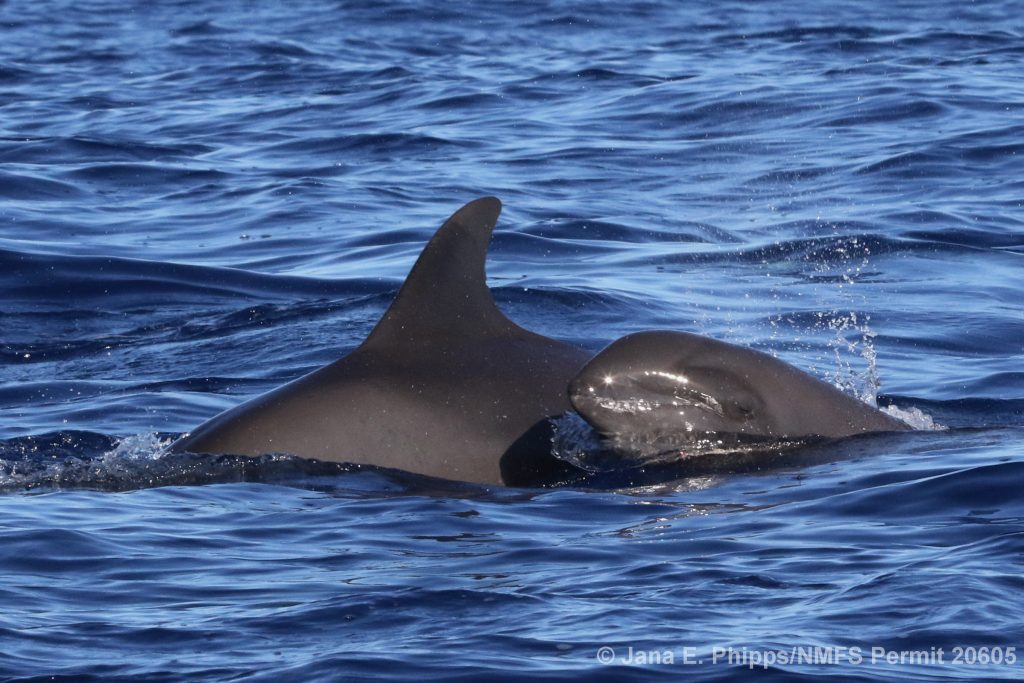
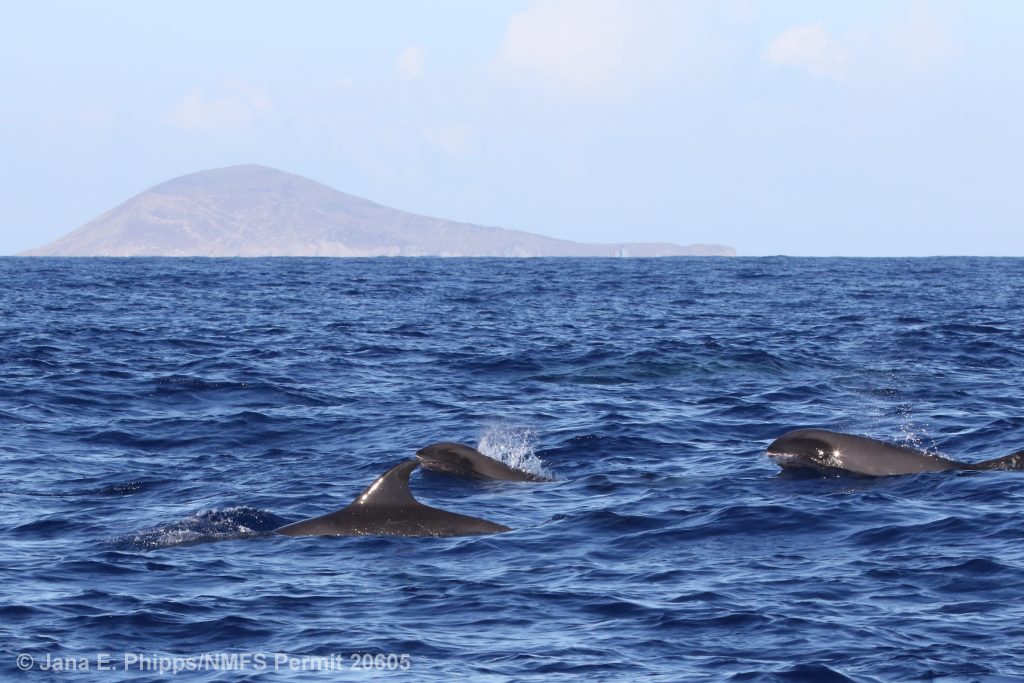
We also had a productive encounter with a large group (>200 individuals) of melon-headed whales, and were able to deploy two LIMPET satellite tags as well as obtained several thousand photos to identify individuals. Melon-headed whales are not resident to Kaua’i or Ni’ihau, so we don’t know how long this group will stay in the area. For more information on melon-headed whales in Hawaiian waters check out our web page for this species!
August 17th update
We’ve been very lucky with the weather for our first two days on the water, allowing us to search in deep water for much of the time. Today our first encounter of the day was one of our high-priority species, short-finned pilot whales! We were able to get one LIMPET satellite tag out on an individual in the group – the primary tags we are deploying this project are Wildlife Computers SPLASH10-F tags, recording behavior data (dive depths and durations) as well as obtaining Fastloc-GPS locations up to twice an hour, allowing us to track their movements more precisely than typically available with Argos satellite tags.
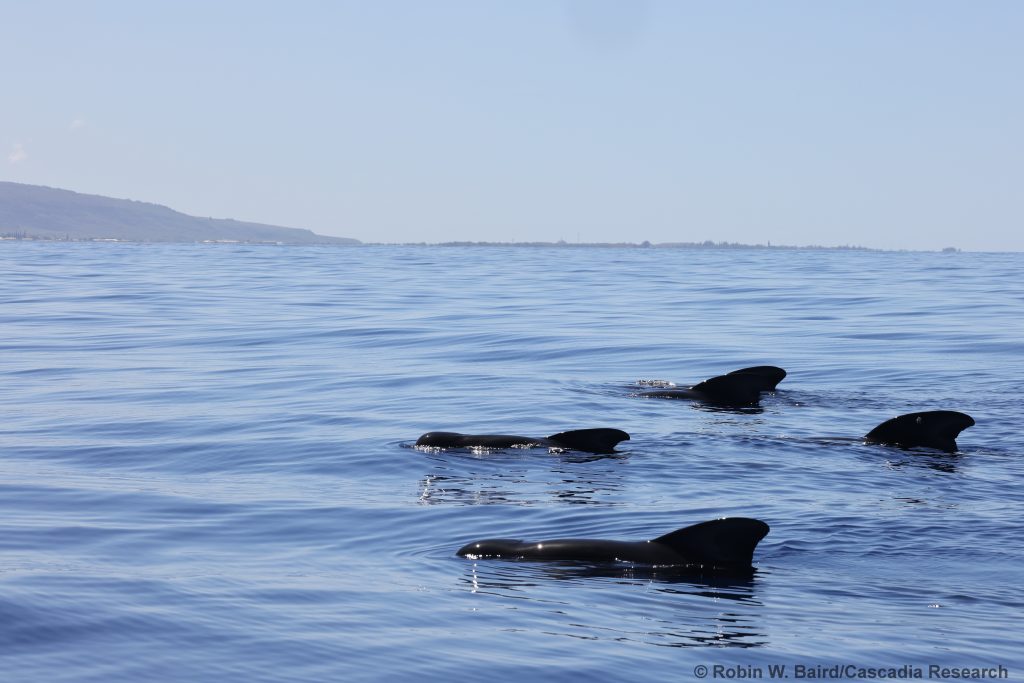
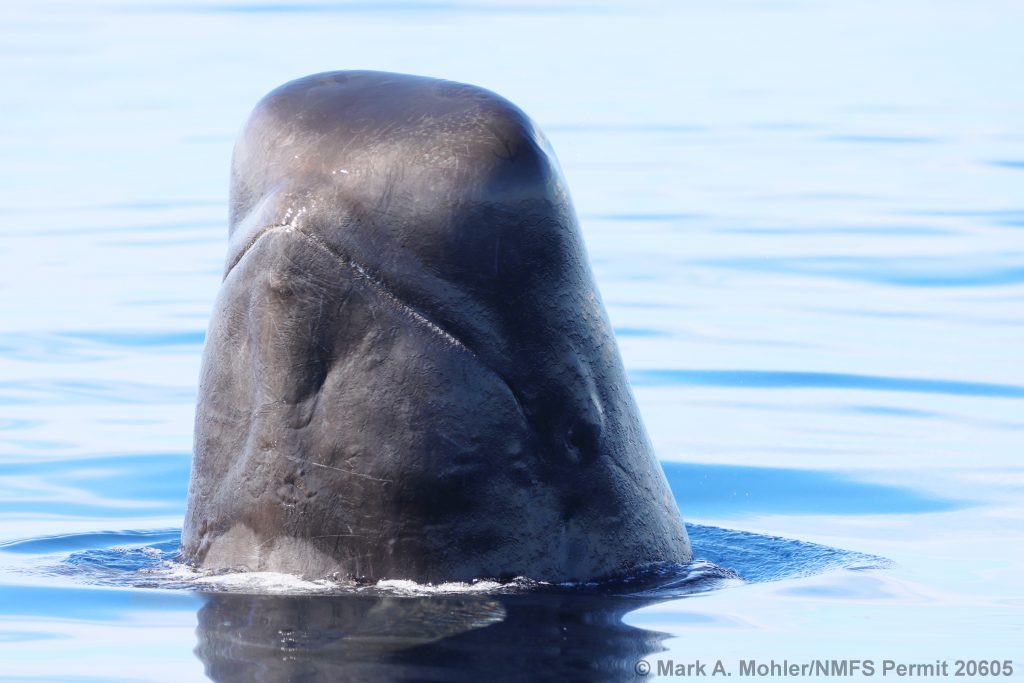
Later in the morning we were directed to a second group of short-finned pilot whales, this one detected acoustically on the range. We were able to tag two different individuals in this group, and get good identification photos of more than a dozen individuals.
As we were leaving the group, we spotted an even higher-priority species, Blainville’s beaked whales! While the pair of individuals were not particularly cooperative, we were able to get good identification photos of both.
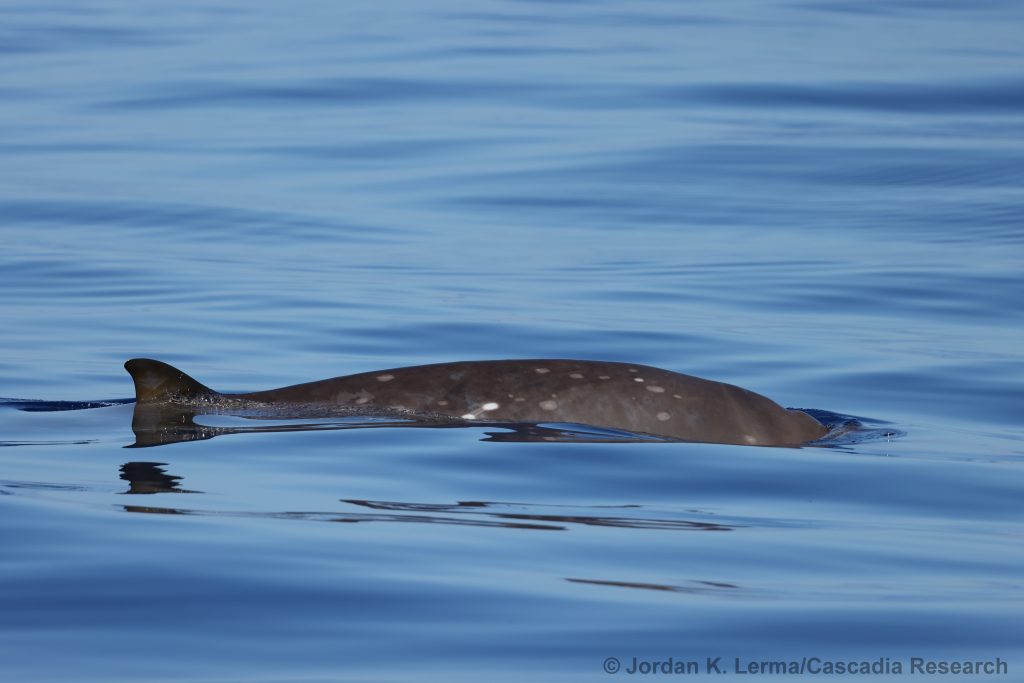
Later in the day we were directed to another group of Blainville’s beaked whales that were detected acoustically on the range. This group was larger – about seven individuals – and in addition to identification photos we were able to deploy one LIMPET satellite tag.
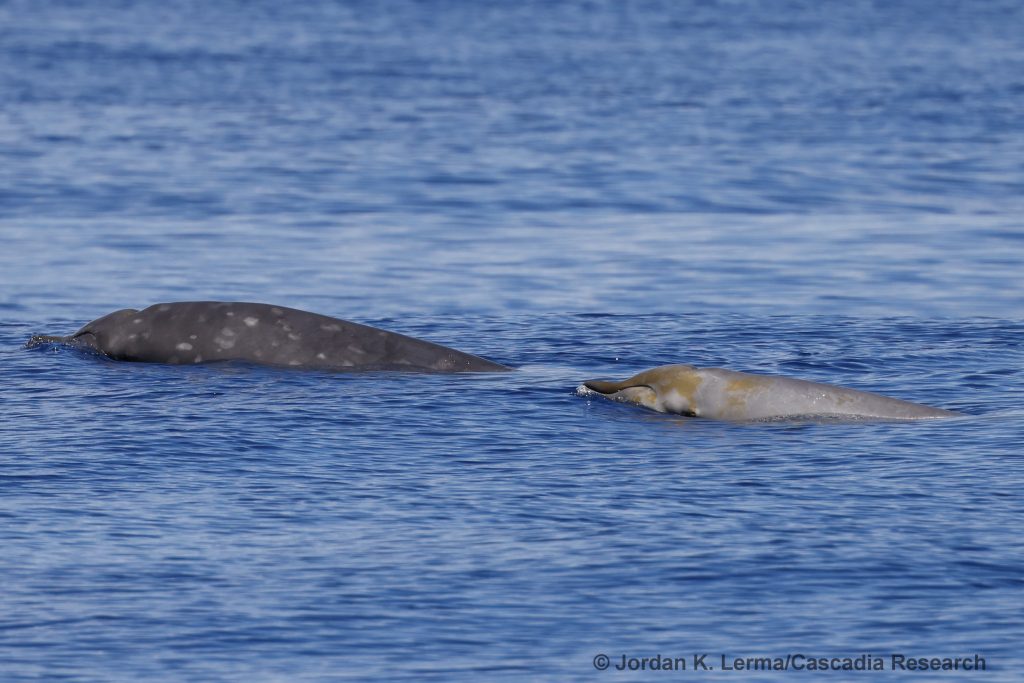
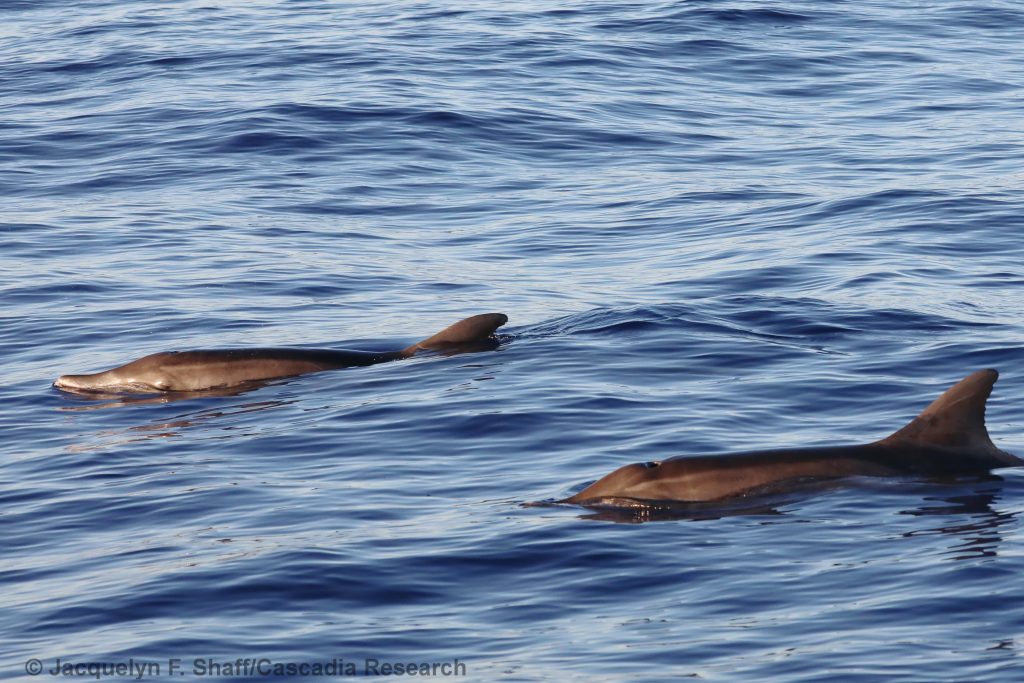
On our first day on the water we covered 162 km, most of it in deep and relatively calm water, although our only sightings for the day were groups of rough-toothed dolphins and spinner dolphins.
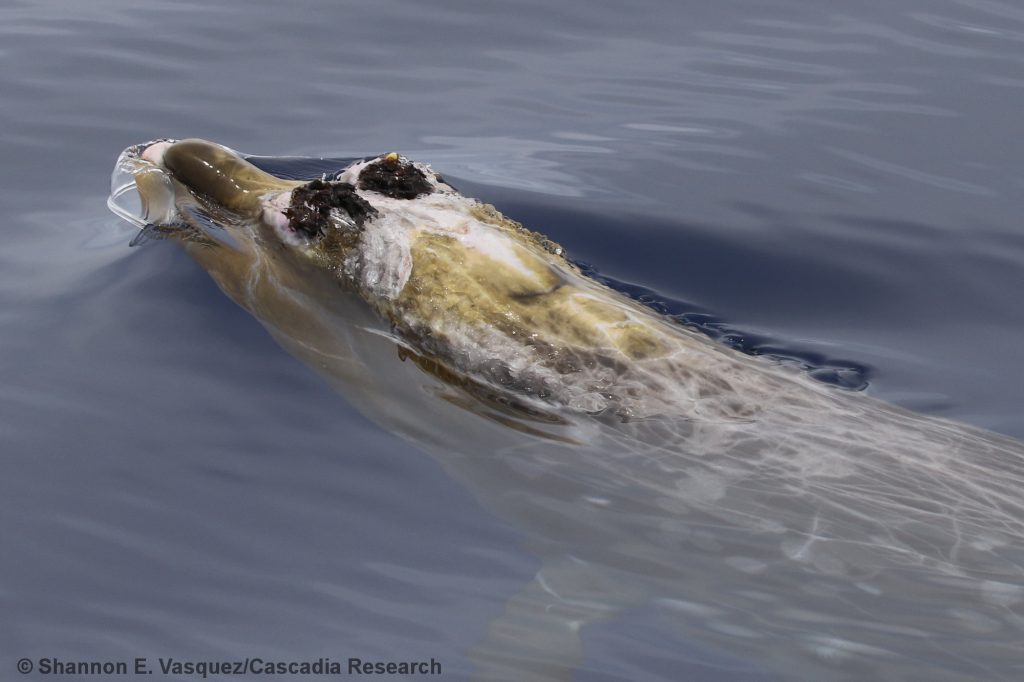
Photos on this page were taken under NMFS Scientific Permit No. 20605
Contact Robin Baird (rwbaird “at” cascadiaresearch “dot” org) for more information